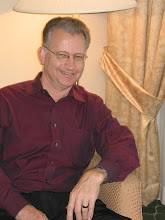So Friday September 11 Aviation Research sent me some photos, shown above. It looks like the project really is approaching completion!!
Monday, September 14, 2009
Almost Done??!!
So Friday September 11 Aviation Research sent me some photos, shown above. It looks like the project really is approaching completion!!
Monday, September 7, 2009
A Two-Year Project
On Friday, September 4, I went to the Sandy River Airport to see about the progress on my airplane. The sight of the airplane sitting in the hangar by the door, looking for all the world like it was ready to fly, was exciting. It wasn't until I got to the airplane that I realized that a lot of work remains.
This photo shows the final stages of the construction of the wiring harness. The gyro panel is scheduled for installation later this month, and final testing should be completed by the end of the month. I had no idea that the addition of all the avionics would be so complicated. Aviation Research Systems continues to test and re-test every connection. All the wiring is tagged every 6" with a hot stamp identifying the wire and where it goes. Space for everything is at a premium and there is absolutely no more room to add anything (according to Bill, the avionics tech).
The Xerion engine monitor CPU mounts on the engine side of the firewall and has required the installation of multiple connectors (three, I believe) so that the inside display can be removed for service. Xerion was recently acquired by Ultra Electronics Flightline Systems. I can only hope that the support for this outstanding product will continue.
The decision to add these connectors was fortunate, since the Xerion AuRACLE has recently been recalled for a system update.
I noticed that the fuel cap access panel had been removed, since the paint was missing from around the screws. Further investigation revealed that the old fuel caps have now been replaced with Aviation Research locking caps, as shown in the photos below.
Allowing the fuel cap to be removed.
Similarly keyed security locks have also been installed in the main and baggage doors.
With the installation of the special antennas for the Aspen PFD displays, the old rotating beacon was removed. It was not possible to re-install a beacon on the top of the airplane, so a new beacon/strobe was installed on the belly.
All the interior panels have now been replaced. The new panels, in the format of the Beech F33, will allow the upholstery shop to redo the interior quickly and easily. As a part of the interior work, special passenger reading lights were installed for the rear-seat passengers. The photo below shows the rough wiring for these lights.
For the first few months, I have elected to fly the airplane with dual controls installed. Ultimately I suspect I will replace the dual yoke with the single, throw-over yoke, but initial configuration with dual controls will make dual instruction easier. The main control wheel has multiple buttons and switches for easy access to frequent actions. The photos below show the final configuration of this wheel, which is now ready to install in the airplane.
An amazing number of wires will tie the wheel-mounted controls to the instrument panel. The pilot side yoke has controls for:
- Push to talk
- Control wheel steering
- Autopilot disconnect
- Electric trim
- Transponder ident
- Comm 1 frequency swap
- ATC record
- Digital recorder on/off
Here is a photo of the collection of wires to be terminated in a connector for the control yoke. Fortunately, when the controls are changed over to a single yoke, the connector will be identical and no additional wiring will be required.
And so the waiting continues.
Subscribe to:
Posts (Atom)
